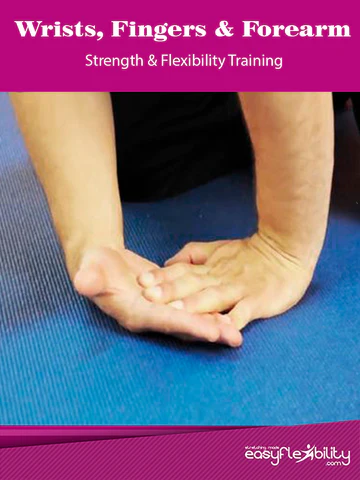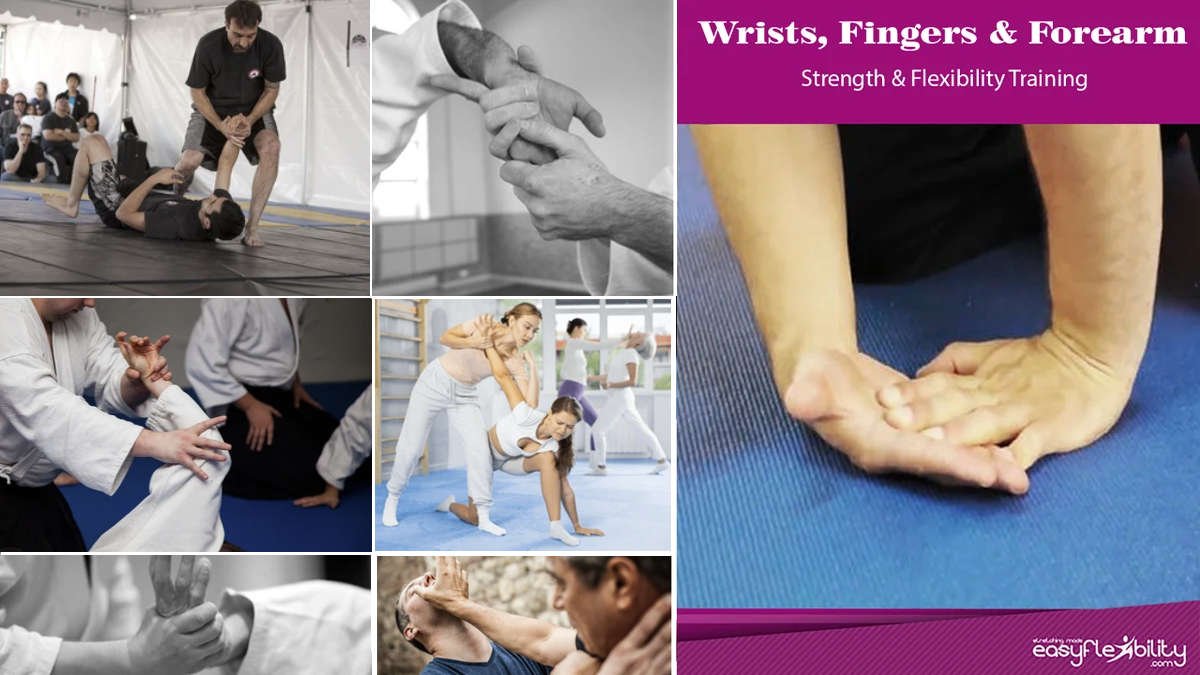
Wrists & Forearms Training
The Wrist and forearm flexibility program is often forgotten and neglected compared to large muscles such as the hamstrings, adductors and even Lats or hip flexors. In certain disciplines having a strong flexible wrist means the difference between getting injured or staying on top of your game.
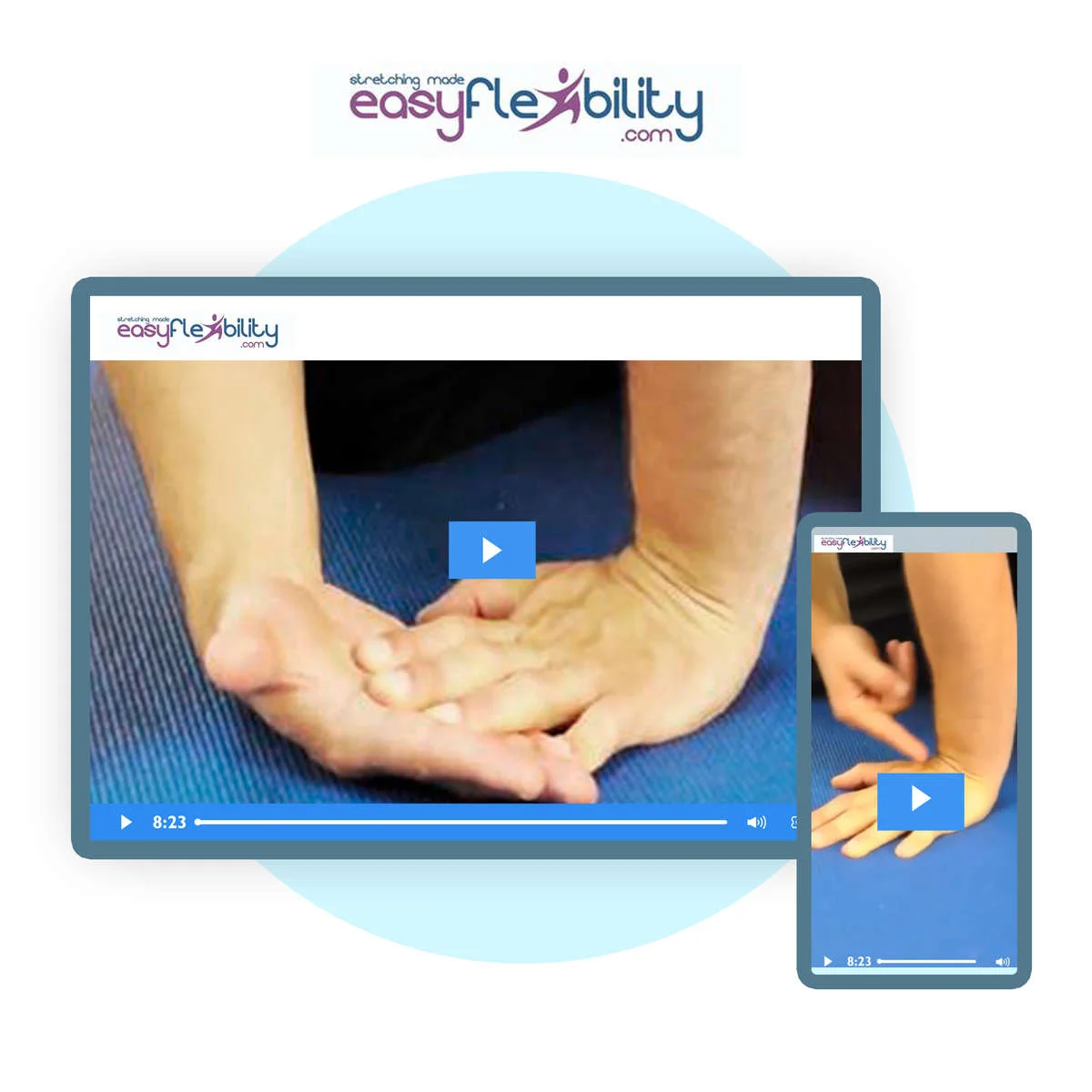
In this Wrists, Fingers & Forearm training program you will learn how to get extremely flexible and strong wrists, fingers and forearm. Here you will learn conditioning exercises, ZST's and Supporting exercises to help you keep your newly found flexibility and strength!
- See visible results in 1 to 3 easy follow along workouts.
- Unique muscle by muscle isolation stretching techniques.
- Fast Progress.
- Permanent Results.
- No Pain.
- No Injuries.
- Flexibility & Strength combined.
- For all ages.
- 30 – 40 minute workouts, 2 – 3 times a week.
- Train at home. At your own pace. On any device.
- Instant Lifetime Access.
- No hidden fees. No strings attached. No surprises.
Joint lock wrist flexibility how important is it in a joint lock?
If you practice a martial arts style which involves joint locks, a style such as jujitsu, aikido, hapkido and so on. Strength and flexibility in your joints, and of course, active and passive range of motion training in your joints will help quite a lot for injury prevention and performance.
It is important to note that some joints cannot develop flexibility beyond the normal range of motion unless someone decides to stretch the ligaments. And this is not something that we will talk about here. But while you can increase your wrist flexibility quite a bit, your fingers and even in your shoulder joint, if somebody puts you into an arm bar, leg bar, knee bar you cannot get more extension of the elbow or extension of your knee than there is. I'm putting this out there for people to realize that with some joints is just not possible.
It is important to note that some joints cannot develop flexibility beyond the normal range of motion unless someone decides to stretch the ligaments. And this is not something that we will talk about here. But while you can increase your wrist flexibility quite a bit, your fingers and even in your shoulder joint, if somebody puts you into an arm bar, leg bar, knee bar you cannot get more extension of the elbow or extension of your knee than there is. I'm putting this out there for people to realize that with some joints is just not possible.
Joint Lock: Wrists strength and flexibility development as self defense and injury prevention.
My own personal interest in developing strength and flexibility in the joints was specifically as a defense against locks and also as injury prevention. It all started when an overzealous beginner student who was doing a self defense move, used full force on my wrist and injured it.
At that time, the closest thing that we did to wrist conditioning, either flexibility or strength, was doing back of the hand pushups. Nothing else. While I was waiting for my wrist to heal. I was hanging out with one of my friends who was taking lessons in a gymnastics school. He was a martial artist, but he wanted to learn how to do gymnastics skills for the competition purposes. And I witnessed some of the gymnasts in his school having freakishly crazy wrist flexibility. Not just extension of the wrist, which is when you put your palm on the floor, but also the flexion of the wrist, which is when you put back of the hand on the floor. And that got me thinking.
What if I have such a crazy flexibility in my wrist, that if someone tried to do a wrist lock on me, by moving my wrist into flexion, in other words, kind of pushing my palm toward my forearm, I would be able to actually come out of that lock simply because they wouldn't expect that much flexibility. They would expect the range of motion to end and the pain to set in maybe at 90 degrees or something like that, but not at 120, 130, 140 or more degrees. I wanted to test that theory right there on the spot by asking these students if I can lock their wrist to see if they feel any pain or not and how much I can actually lock the wrist. But I was concerned that I might hurt them and it's not going to be a good thing.
Although I had a hunch that this flexibility would be extremely helpful to prevent the person doing the lock from doing it successfully. So while my right wrist was healing, I decided to start training my left wrist. The flexibility and strength exercises were primitive. Nothing like something that I know and practice now. But I knew some basic concepts. And those are the concepts that I followed. After a while I began to develop flexibility and strength in my wrist. Although I believe it could have happened a lot faster, have I known what I know now. Eventually, my right wrist healed, and I began to train my right wrist as well, even if it did lag behind.
At that time, the closest thing that we did to wrist conditioning, either flexibility or strength, was doing back of the hand pushups. Nothing else. While I was waiting for my wrist to heal. I was hanging out with one of my friends who was taking lessons in a gymnastics school. He was a martial artist, but he wanted to learn how to do gymnastics skills for the competition purposes. And I witnessed some of the gymnasts in his school having freakishly crazy wrist flexibility. Not just extension of the wrist, which is when you put your palm on the floor, but also the flexion of the wrist, which is when you put back of the hand on the floor. And that got me thinking.
What if I have such a crazy flexibility in my wrist, that if someone tried to do a wrist lock on me, by moving my wrist into flexion, in other words, kind of pushing my palm toward my forearm, I would be able to actually come out of that lock simply because they wouldn't expect that much flexibility. They would expect the range of motion to end and the pain to set in maybe at 90 degrees or something like that, but not at 120, 130, 140 or more degrees. I wanted to test that theory right there on the spot by asking these students if I can lock their wrist to see if they feel any pain or not and how much I can actually lock the wrist. But I was concerned that I might hurt them and it's not going to be a good thing.
Although I had a hunch that this flexibility would be extremely helpful to prevent the person doing the lock from doing it successfully. So while my right wrist was healing, I decided to start training my left wrist. The flexibility and strength exercises were primitive. Nothing like something that I know and practice now. But I knew some basic concepts. And those are the concepts that I followed. After a while I began to develop flexibility and strength in my wrist. Although I believe it could have happened a lot faster, have I known what I know now. Eventually, my right wrist healed, and I began to train my right wrist as well, even if it did lag behind.
I had enough range of motion to simply slip my hand out of his grip
Eventually I felt like I was ready to do an experiment on myself. I chose my left wrist because it was more flexible. I asked one of the people I was training with to try to lock my wrist and take me down. In other words, in a supinated position to turn my fingers up and my palm toward my forearm and from there to pull me down to the ground. He did, and he brought my wrist into flexed position and when he tried to pull me down, I had enough range of motion to simply slip my hand out of his grip.
Subconsciously, he was so sure that my hand is secure in his hands that he didn't even try to hold my hand. All he was doing is pushing with his thumbs into my knuckles and pulling with his fingers into my wrist. But he didn't try to squeeze and hold my hand, so I easily slipped it out.
Subconsciously, he was so sure that my hand is secure in his hands that he didn't even try to hold my hand. All he was doing is pushing with his thumbs into my knuckles and pulling with his fingers into my wrist. But he didn't try to squeeze and hold my hand, so I easily slipped it out.
What is the significance as a defense to wrist joint lock?
The significance is that if someone ever tries to do this to you in a real confrontation, which is extremely unlikely, you will have an opportunity to recover your arm from the attacker without getting injured.
At the same time, what is a lot more likely is when someone is performing a joint lock on you who is not well trained, doesn't have good control, or simply is using excessive force, thinking that it's an actual self-defense situation where it's just training, you have an opportunity to escape an injury.
If I had that level of flexibility, I definitely would not have gotten injured.
At the same time, what is a lot more likely is when someone is performing a joint lock on you who is not well trained, doesn't have good control, or simply is using excessive force, thinking that it's an actual self-defense situation where it's just training, you have an opportunity to escape an injury.
If I had that level of flexibility, I definitely would not have gotten injured.
How is our Wrist, Forearm and Finger Flexibility program different? With this program you can:
- ✅**Transform Your Wrist, Forearm, and Finger Flexibility** with our on-demand, pre-recorded video program, designed to move beyond traditional relaxed stretches.
- ✅**Target Every Muscle** with our specialized approach that addresses the many smaller muscles often overlooked by standard stretching routines.
- ✅**Comprehensive Coverage** ensures no muscle is neglected, focusing on both superficial and deeper muscles for complete hand and forearm flexibility.
- ✅**Innovative Techniques** employ two or more actions of each muscle against each other, creating space to quickly enhance length and range of motion.
- ✅**Avoid Stretch Reflex Pain** with our unique system, designed to bypass the discomfort typically associated with stretching, making your flexibility journey pain-free.
- ✅Our approach is tailored to ensure you achieve the best results in your flexibility journey, focusing on precision and effectiveness.
Zaichik Stretching Method is unlike anything you've ever tried before!
- Scientifically designed by a world renowned fitness & flexibility expert Paul Zaichik, with over 30 years experience in the field.
- Isolates muscle action one by one (to ensure they are doing their job).
- Takes care of the muscles that are tighter first.
- Allows easier focus, since you are working on one specific area at a time.
- You can do it All on your own! No pushing or bouncing is necessary, not even a partner!
- Remember that phrase 'No Pain - No Gain?', well it doesn't apply to our method. Each stretch is designed to be PAIN-FREE! Thereby eliminating discomfort and allowing you to continue training to achieve faster results.
- Totally safe , since it was designed according to what is natural for your body.
- Gains are permanent and steady. It is very enjoyable to do.
- The approach of our programs is very different from standard stretching approaches. Instead of using other poses, for example such as in Yoga, other Asanas are used to prepare for a stretch, Zaichik Stretching Techniques are used to isolate each muscle being stretched which results in a pain free, fast, easy and safe stretching method.
- Results are visible right away since the stretch reflex is avoided, which means you'll get to show off your flexibility in no time!

It's easy to get started!
If you are ready to start your Wrists, Fingers & Forearm training with a training method that is Easy, Pain Free and Fast, that is designed to work naturally with your body and keep your flexibility for years to come, then join thousands of satisfied EasyFlexibility practitioners and START YOUR TRAINING TODAY!
The price for this course is only $39.95 $29.95
Plus when you sign up for this course you will also get these bonuses:
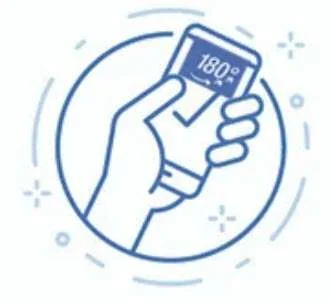
Stretch180 App
Kick Measurement App Online. This app will measure your kicks accurately and tell you how many degrees you are progressing each training session. Track your progress. Keep you engaged and motivated with your training. And keep you focused on your Kicking Goals!

Support Group
Access to a Private Support Group: No longer will you train alone. Now you can be part of a group and train alongside other ElasticSteel practitioners. Once registered for this course you will gain access to a private support group, where you will find 24-hour active community to share your experience with, ask questions and get advice.

Lifetime Access
Once purchased, this course is your to keep forever! There are no hidden fees and no strings attached. You will not be billed monthly, you pay only one time and get unlimited lifetime access to this program which is kept for you in your very own online library for easy access on any device of your choice, anytime, anywhere.

YOU MAY ALSO BE INTERESTED IN:
YOU MAY ALSO BE INTERESTED IN:
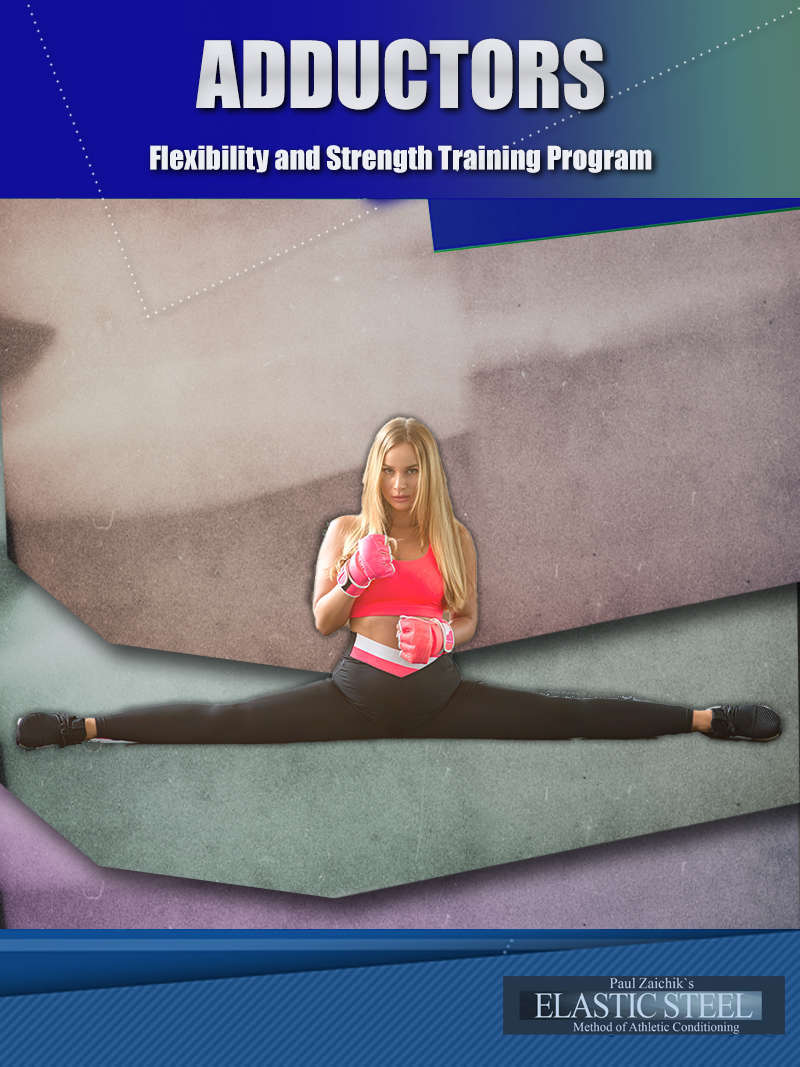
Adductors Strength & Flexibility
This program contains:
Adductors are four muscles whose primary role is hip adduction. Adduction is pulling the limb toward the mid-line of the body.
Additionally some texts list Pectineus as an adductor. There are a number of other muscles that also adduct the leg. Most of those muscles are external rotators of the hip. Since most applications of abduction have a superimposed lateral rotation, additional adductors do not restrict abduction or horizontal abduction. The exception are medial hamstrings, which are internal rotators of the hip.
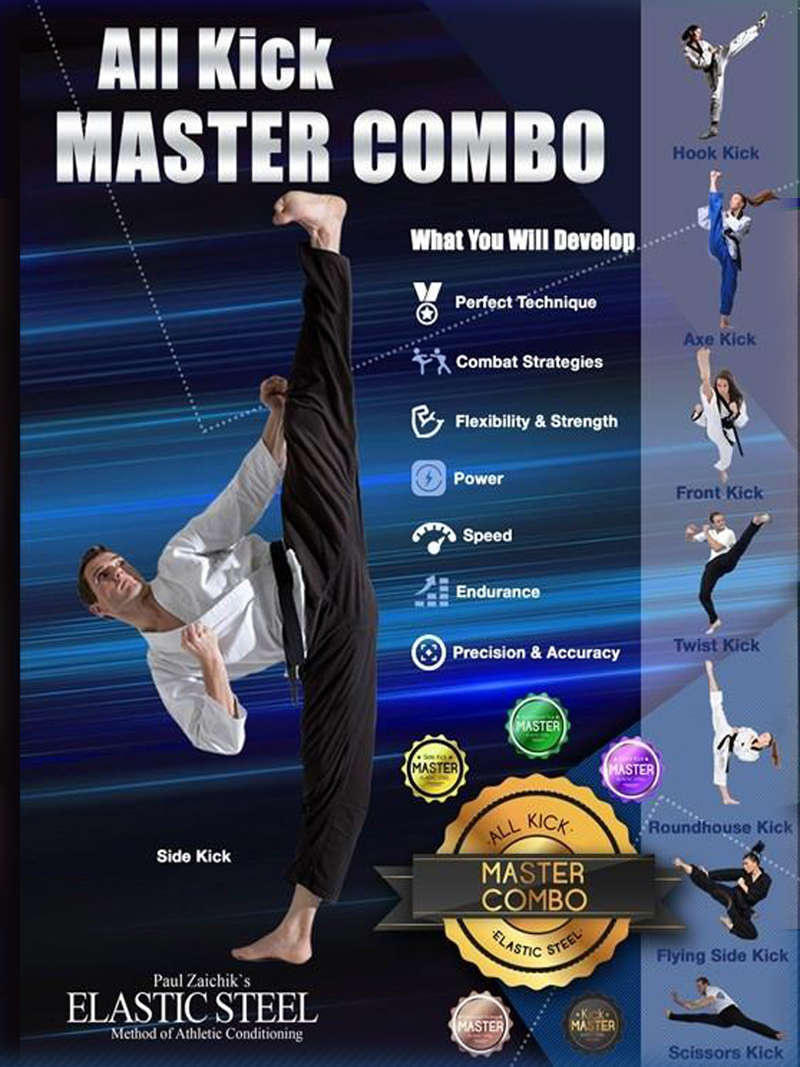
All Kick Master Combo
This Package includes:
Side Kick Training (7 programs)
1- Technical Kicking Leg Development
2- Trunk Flexibility and Strength for Optimum Kicking
3- Supporting Leg Training For Kicking Height
4- Precision and Accuracy
5- Speed Development
6- Power Development
7- Neutralizing Opponents Defense and Guard Penetration Set Ups
Roundhouse and Hook Kicks Training (4 programs)
1- Roundhouse Kick: Technical Kicking Leg Development
2- Roundhouse Kick: Speed Development
3- Roundhouse Kick: Power Development
4- Hook Kick: Power Development
Front Kick Training (5 programs)
1- Front Kick and Front Line Kicks: Technical Kicking Leg Development
2- Front Kick: Speed Development
3- Push Front Kick: Power Development
4- Axe Kick: Power Development
5- Ball of the Foot: Point of Impact
Advance Kick Training (4 programs)
1- Twist Kick Technical Kicking Leg Development
2- Flying Side Kick: Technique and Jumping Height Development
3- Scorpion Kick: Perfect form Development
4- Flying Split Scissors Kick, Two Direction Kick
Kick Retention Training
A specific video focusing on functional kick training.
Three Classic ElasticSteel Functional Strength And Conditioning Books
1- The Gravity Advantage
2- The Gravity Advantage Max
3- The Power of One
Two Extra Programs for Hand Conditioning
1- Fist Point of Impact: Wrist, Knuckles and Forearm Development
2- Palm Strike Strength and Flexibility Training
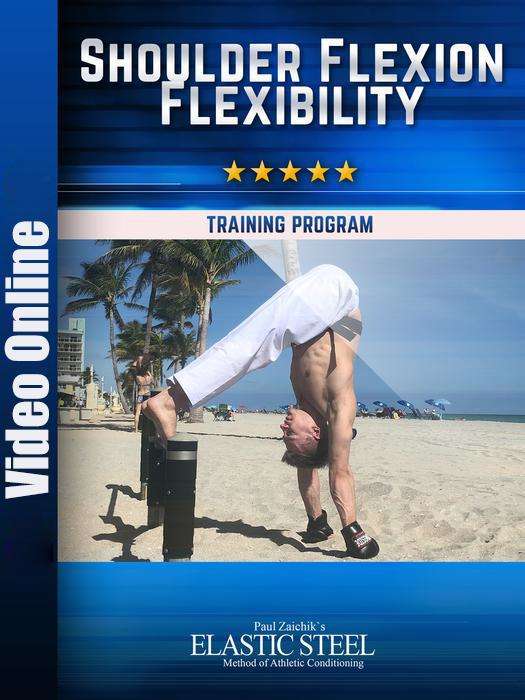
Complete Shoulder Flexion
This program contains:
Being able to stretch the shoulder abductors and extensors, as well as scapula inferior rotators allows the arm to come up to at least vertical line. In many cases more than 180 degree is needed, in throwing sports for example, such as javelin, football and baseball. Same applied to serves in volleyball and rocket sports.
Enough time wasted!
Stop wasting time and money, risking your health, hitting plateaus, wondering how to reach your goal instead of working towards it!
Start your ElasticSteel Training Program right NOW!
Start your ElasticSteel Training Program right NOW!

